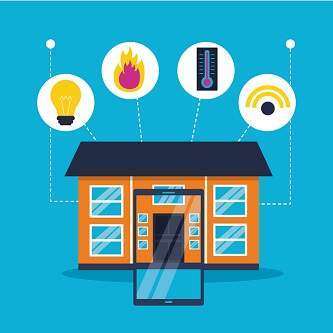
Our homes should be a place of refuge and protection from the outside world. But sometimes, if we don’t keep our homes safe, we’ll be putting our lives in danger. This is why when it comes to household electrics, we need to be careful.
Flickering lights, damaged appliances, high bills are all possible signs of electrical issues on your home circuit. We’ve listed below some of the electrical problems. You can find proper solution for them shared by new home builders and electricians themselves.
1. Sags and dips in electrical supply
Electrical sags, surges, and dips in power supply are some of the results caused by devices connected to your power grid that are malfunctioning or made with poor materials, and produce more power when they are turned on.
2. Light switches are poorly working
If you have dimmer switches and observed that they don’t adjust lights properly, this is usually linked to careless workmanship or sub-standard products.
If you recently moved into a new house and you discovered that the switches don’t even seem to work at all, it may indicate that the switches have been replaced and fixtures removed, or there may be something wrong with the circuit, fault in the outlet, or wiring. It’s best that you call help from an electrician if you’re experiencing these switches problems in your home.
3. Faulty electrical wiring
Electrical surges can happen when there is poor wiring in the house or a lightning hits or faulty appliances or harmed power lines. Although surges commonly happen and end for a microsecond, it’s not normal if you experience surges more often because that can result in equipment damage which will only lower life expectancy particularly.
Observe the device that’s connected to the home grid or the wiring and try to remove the poor quality devices or powerboards from the outlet. If the surges don’t happen, congratulations! You already have the answer to the problem. If nothing happened, it’s time to call an electrician.
4. Circuit breaker tripping habitually
If you use microwaves and hairdryers, it may trip circuit breakers, especially when the same power consuming items are used on the same outlet. Take note that these are high wattage items and they have the possibility to cause circuit breaker tripping.
A circuit breaker is created to protect people and their homes, so when it trips, it’s an indication it’s doing its job.
But when it trips, make sure you look at what you were using. For instance, if it’s a hair dryer, you may want to use it in the low setting. On the other hand, try to reduce the electrical usage on a single circuit while high watt devices are in use.
5. Overloading of light fixture
Sometimes, you really need to check your light fixture if it’s a bulb or other fitting with higher watts than the designed fixture. This is an obvious violation in the code and it has a high level of risk. If the bulb heats up, it can melt the insulation and socket present in the wires of the fixture. If this high heat from the bulb continues, it can melt the socket and insulation that can be found in the wires of the fixture.
This may lead to sparks from one wire to another and cause electrical fires. And even if you removed the bulb after that, the wires and socket will still be damaged.
It’s always recommended to fit a bulb or other fittings within their wattage. If you think that fixtures are not within the proper wattage, the advice is to utilize a 60-watt bulb or even smaller ones.
6. Uncovered junction box
A junction box of a home has plenty of wires that are connected to each other. If it’s not covered, you may get shock from the damage wire also. This is a code violation you need to observe and the risk is not that serious if the wires are not within the reach. Therefore, it’s recommended that it must be covered with the screws for safety.
7. Lights get too dim or bright
Have you observed how some of the lights around your house seem intensely bright but others are dim, then there could be two main causes:
- Various types of lights with different wattage. You must check all the globes should be identical.
- Poor major neutral connection. If this is not fixed by a professional, it will continue to cause issues for the home.
8. Electrical shocks
No one wants to get electrically shocked, right? Although it’s usually mild, and it can be related to a static shock, it’s still a reminder that electricity shocks usually happen when you turn a device on or off.
The problem here could be the appliance itself, or in the wiring. Also, you may try this by connecting another device and check if the results are the same, but you need to be careful because you might be putting yourself to another possible electrical shock. We highly recommend that you consult this with an electrician.
9. Costly electrical bill
Lastly, when it comes to reducing the expenses of your electrical bill, here are some of the things you need to know:
- Choosing a more penny-wise provider
- Determining the devices that cause electrical surges
- Covering leaks in the hot water system
- Appliances and chargers must be unplugged when you’re not using them
- Repair harmed circuits or wiring.
For more home improvement tips, you can check out this page for more blogs.


